How to Increase Self-Awareness: 16 Activities & Tools (+PDF)
 Self-awareness is an important skill that we can cultivate to help us progress on our personal development journey, and we could all use a little more of it sometimes.
Self-awareness is an important skill that we can cultivate to help us progress on our personal development journey, and we could all use a little more of it sometimes.
In our stressful, modern lives, it’s easy to react passively to our environment and fracture opportunities to connect. Possessing emotional intelligence and regulating our emotions should be some of the most valued skills; self-awareness is the cornerstone of that intelligence.
Read along for some tried-and-tested, science-based strategies to raise self-awareness.
But first, we thought you might like to download our three Emotional Intelligence Exercises for free. These science-based exercises will not only enhance your ability to understand and work with your emotions, but also give you the tools to foster the emotional intelligence of your clients, students, or employees.
This Article Contains:
- How Do We Develop Self-Awareness?
- 4 Ways to Increase Self-Awareness
- 3 Tests, Questionnaires, and Assessment Scales
- 5 Activities, Games, and Exercises to Build Self-Awareness
- The Self-Awareness Wheel
- Some Group Exercises
- Interview Questions, Techniques, and Tips
- A Look at Journaling for Self-Awareness
- Self-Awareness and Kids + Activities
- Training Your Self-Awareness: 3 Courses
- 5 Books on the Topic
- 5 Interesting Videos and TED Talks
- Top Podcasts
- Inspirational Quotes on Self-Awareness
- A Take-Home Message
- References
How Do We Develop Self-Awareness?
Self-awareness is the ability to monitor our inner and external world. Our thoughts and feelings arise as signals. Developing self-awareness allows us to keep from being swept away by those signals, and instead, objectively and thoughtfully respond to them. Self-aware people understand their internal experience and their impact on the experience of others.
The ability to self-evaluate has been criticized in the past for increasing negative affect. When encouraging self-awareness from the “cool” system of stimuli (Metcalfe & Mischel, 1999), the increase in negative affect can be lessened. A rise in negative emotional affect is a hindrance to progress in self-awareness.
When working on self-awareness, it is essential to do so from a self-distanced perspective, with a focus on reasons underlying emotional experience rather than what was emotionally experienced (Kross, Ayduk, & Mischel, 2005).
An open, objective observation of feelings, senses, desires, and actions can help someone move up the flourishing continuum. There’s no need to relive negative emotions, but noticing them and learning from their presence can boost self-awareness.
Developing self-awareness requires higher level cognitive processing. It requires an information-gathering perspective. This processing results in increases in adaptability and flexibility. Having increased self-awareness builds resilience (Hippe, 2004). Self-awareness also improves our ability to empathize with others (Younas, Rasheed, Sundus, & Inayat, 2020).
When compassion and empathy rise, so does the higher self. With intentions and purpose, a self-aware human can significantly impact the world around them. Self-aware people tend to show up with self-confidence, self-worth, and high success rates (Duval & Silvia, 2002).
4 Ways to Increase Self-Awareness
 A thought diary is a foundational place to begin increasing self-awareness.
A thought diary is a foundational place to begin increasing self-awareness.
Keep track of thoughts that pop up in the form of an automatic reaction.
Track what was occurring at the time.
Track your level of emotion to the stimulus.
If time allows, analyze the underlying reason for the emotion experienced. If time does not allow, the diary will enable you to track common threads.
Introspection is not efficient in higher order cognitive processes (Nisbett & Wilson, 1977). Humans tend to reflect with a self-serving bias, rather than objectively analyzing situations for abstract learning. To be more efficient, the thought diary should be less of an emotional exercise and more of a fact-finding mission. In other words, leave judgment out of it.
Starting a mindfulness practice is another way to increase self-awareness. There are a variety of activities to include in a mindfulness practice. Find a few ideas to inspire you to incorporate meditation, yoga, or some other variation to improve your presence. When mindfulness is practiced, behavior becomes more intentional, and increased self-awareness develops.
Asking a friend to clarify your strengths and weaknesses can be a significant pathway to self-awareness. While many people believe they are self-aware, having an outside perspective is helpful in a clearer understanding of external self-awareness.
Experience and power may be a hindrance to self-awareness (Ostroff, Atwater, & Feinberg, 2004). This is for those leaders out there. Ask your subordinates to rate your leadership skills. When people are at the top, they tend to overestimate their abilities because they don’t have as many opportunities to build external awareness.
3 Tests, Questionnaires, and Assessment Scales
The Self Consciousness Scale (Scheier & Carver, 1985) has been validated and translated into several languages. It helps to better understand one’s level of rumination and to shift it instead to objective reflection.
The Situational Self-Awareness Scale was designed to quantify levels of public and private awareness. It has been validated and translated many times. It has two sub-scales that help validate differences and cues to these two forms of self-awareness (Govern & Marsch, 2001). You need permission from the authors to use this scale for scientific purposes.
Tasha Eurich’s research on self-awareness leads to this interesting quiz. It measures internal and external self-awareness and places participants in quadrants, allowing for growth in understanding the power of knowing the ‘self.’ There is more on her interesting book below.
Various scales to measure mindfulness and increase awareness can be found on our blog.
5 Activities, Games, and Exercises to Build Self-Awareness
 Knowing one’s VIA Strengths and intentionally increasing them are important ways to build self-awareness.
Knowing one’s VIA Strengths and intentionally increasing them are important ways to build self-awareness.
Other personality inventories offer an increase in self-awareness too. Taking that insight into real-time practice is a vital awareness builder.
Becoming self-aware is not a single moment of inspiration. It requires continual, objective reflection and experimentation in real-world settings.
Taking healthy risks is another way to build your self-awareness. Placing yourself in new situations and out of your comfort zone can offer unique personal insight. Here are a few ideas for healthy risks:
- Join a club
- Volunteer
- Begin a new activity (painting, exercise, etc.)
- Switch to open-ended questions
Ask your friends for feedback. By trusting a friend or relative to give you feedback about your qualities – helpful and unhelpful – you can gain insight into how you are perceived. Allowing a mirror to be placed in front of you by your loved ones can be illuminating.
Writing a regret letter is a way to build self-awareness and practice radical forgiveness at the same time. Write to your former self about regrets and forgive that self for mistakes that have been made. This activity permits you to be human.
Write your imaginary eulogy to illuminate how you’d like to be remembered after you’re gone. This exercise allows you to know how you want to show up in the world and the necessary shifts that need to occur. This self-awareness builder will enable you to understand your higher self better.
We have more self-awareness activities on our blog.
The Self-Awareness Wheel
There are variations of the self-awareness wheel used in counseling, mindfulness practices, and even education. Though the wheel has many variations, the version from Dr. Dan Siegel is evidence based. His version can be found on his website. It is a visual metaphor for the process of integrating consciousness.
The core of awareness develops from a central “hub” containing the understanding of awareness or mindfulness as:
- Clear
- Aware
- Receptive
- Open
- Peaceful
- Calm
The core of awareness is the goal, where one’s attention focuses on the surroundings of the “hub” while scanning for:
- The body’s five senses
- Interconnectedness (interaction with the environment)
- Cognitive processes
- Internal physical body
Another version of an awareness wheel was created in the book Alive and Aware (Miller, Nunnally, & Wackman, 1975).
In this wheel, awareness is surrounded by:
- Thinking
- Feeling
- Doing
- Wanting
- Sensing
It’s basically the same concept as Siegel’s wheel but simplified. It can be utilized for improving communication in relationships.
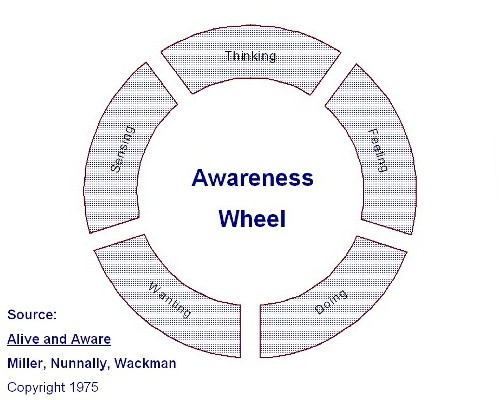
Some Group Exercises
A fun parlor game popularized by French essayist Marcel Proust can be used as an exercise to grow self-awareness. It is called the Proust Questionnaire.
A group activity that requires vulnerability and listening skills is a share circle. With participants in a circle, pass around the following questions on a piece of paper. Have participants listen deeply. Be sure that everyone gets a turn with a positive and negative emotion.
- I feel angry when…
- I feel joyful when…
- I feel unhappy when…
- I feel hope when…
- I wish I didn’t have to…
- I enjoy…
- I feel afraid when…
- Something I’d like to change is…
- If I were (name the person), I would…
- I feel like no one loves me when…
- I know I am loved when…
- Something I find boring is…
- I know I can trust…
- I admire (name the person) because…
- I feel serene when…
- I am most interested in….
- I am annoyed when…
- I disapprove of…
- I am optimistic when…
Another group activity that increases self-awareness is a body language exercise. Divide participants into partners. Give one partner a note showing the type of emotion they should display with only body language. Have the other partner choose what emotion is present in the body language.
To develop awareness in a team setting, help the group become aware of common goals. Team strengths and weaknesses can then be identified and transformed into action steps for team growth. In a group, brainstorm the answers to the following prompts:
This team is great at…
This team struggles at…
This team supports each other by…
On a scale from 1 to 10, how much does each team member notice their emotional reactions?
Our common goals are…
We will grow by…
Our daily actions include…
Interview Questions, Techniques, and Tips
 Emotional intelligence is a growing area of expertise sought after in job candidates for new positions (Nicholls, Wegener, Bay, & Cook, 2012).
Emotional intelligence is a growing area of expertise sought after in job candidates for new positions (Nicholls, Wegener, Bay, & Cook, 2012).
As we know, self-awareness is the cornerstone of building that intelligence.
Here are some questions, techniques, and tips for assessing someone’s self-awareness.
What makes you angry at work?
A self-aware person would respond with an answer that shows how anger is handled in real time. Speaking about how anger is a signal to an adjustment toward perspective taking is a great way to highlight self-awareness capabilities.
As a manager, how do you handle a subordinate who enters your office crying?
A self-aware person would respond with an answer that shows the ability to respond with compassion and strong listening skills. A manager has to have the ability to handle emotions and likely has empathy for others.
How would you handle a subordinate making a mistake?
A self-aware person can take the perspective of failure as a natural process of growth and can help the subordinate learn from that mistake.
What is your superpower?
A self-aware person can effectively articulate what unique offering they bring to the table.
Self-aware folks will typically value teamwork above self-promotion. They value collaboration and have the ability to respond, rather than passively react, to stimuli. Self-aware leaders will lead with intention, empathy, and compassion.
A Look at Journaling for Self-Awareness
At the heart of any journaling practice for self-awareness is honesty. Allowing ourselves to recognize and redirect the self-serving bias enables journaling to increase accuracy in subjective emotional experience. Tracking triggers is quite powerful in decreasing the automated reactions to them.
Someone doesn’t have to be a writer to journal for self-awareness. A stream of consciousness journal won’t be reviewed or read by anyone but the writer. It can reveal and enlighten when reread.
Journaling offers insight into changes that could be made and tracked through personal experience. By writing daily, the thread becomes illuminated. It may even help to keep journals for different areas of life (e.g., work, home, fitness, etc.).
To get creative, it can be quite helpful to start journaling with prompts that ignite self-discovery. Here are a few examples to get you started:
- If I could speak to my teenage self, I would say…
- Can I come up with 20 things that make me smile?
- Two of the most impactful moments of my life were…
- When I’m in pain, the sweetest thing I can do for myself is…
- Today, I used my strengths in the following ways…
- I was most surprised when….
- The scariest day of my life was…
Self-Awareness and Kids + Activities
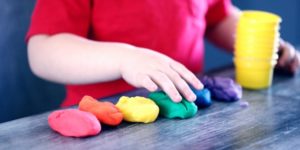 Getting kids of any age to understand the abstract area of emotions is a challenging task.
Getting kids of any age to understand the abstract area of emotions is a challenging task.
Developing emotional intelligence takes some effort, and it begins with self-awareness.
Speaking to strengths and accepting that emotions are temporary is helpful for anyone working with children.
Mindfulness for Kids is an important exercise used to increase self-awareness. The link will take you to games, worksheets, and activities to help those kids in your life.
Offering older kids sentence starters and encouraging them to complete the sentences is a great activity for building self-awareness. Start with these examples:
When I’m bored, I like to…
In my free time, I enjoy…
I’m happiest when…
When I make a mistake, I…
When my day doesn’t go my way, I…
The emotional pie exercise is a healthy way for kids to discuss their emotions. Have the child create a circle. Help the child name eight emotions with individually chosen representative colors. If they have trouble, you can help them with the assistance of Plutchik’s Wheel of Emotions.
Once they are identified, have the child fill the circle with the emotions weighing the slices from most prominent to least prominent. Encourage them to use colors that might feel like they represent those feelings (e.g., red for anger).
A fun idea for younger kids is the emoji plate game. Help children develop the vocabulary to talk about their emotions by making paper plates into emojis created with self-determined labels. For little ones, emotions such as anger, frustration, or disappointment can be hard feelings to process. Yet, it is important to help them to develop the vocabulary to express them positively.
Lea Waters’s work on strengths is a great way to help children develop self-awareness. Waters’s (2017) The Strength Switch is a great book for sparking a genuinely transformational conversation between parents and kids. Like any other humans, kids want to be seen. Helping them recognize their strengths and telling them the strengths that you see in them are wonderful places to start.
Training Your Self-Awareness: 3 Courses
Mindfulness X is a comprehensive training course for practitioners to learn how to infuse mindfulness into their practices.
Udemy offers an affordable online course utilizing Cognitive-Behavioral Therapy, neuroplasticity, and mindfulness. This course is geared toward self-development, particularly in reducing depression and anxiety.
ACT for Youth has developed a helpful toolkit filled with resources for kids.
5 Books on the Topic
Improving self-awareness helps people improve their lives by offering an objective reflection. The topic has gained scientific evidence in improving overall emotional intelligence and success. With increased emotional intelligence, improved human connection and leadership are possible. Here are some great reads on the topic.
1. A Theory of Objective Self Awareness – Shelley Duval and Robert Wicklund
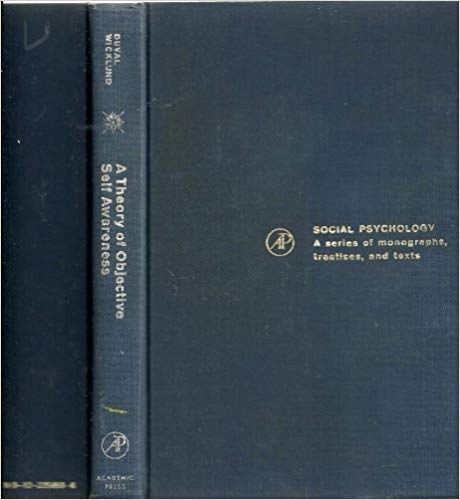 This book was foundational in social psychology for the understanding of self-awareness.
This book was foundational in social psychology for the understanding of self-awareness.
It offers links to cognitive processes.
While somewhat antiquated, it has bedrock theory that can help readers understand the concept of objective self-awareness.
Available on Amazon.
2. Self-Awareness (HBR Emotional Intelligence Series) – Harvard Business Review, Daniel Goleman, Robert Steven Kaplan, Susan David, and Tasha Eurich
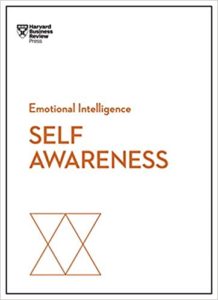 The Harvard Business Review released a series of books including Self-Awareness, which includes the work of Daniel Goleman, Robert Steven Kaplan, and Susan David.
The Harvard Business Review released a series of books including Self-Awareness, which includes the work of Daniel Goleman, Robert Steven Kaplan, and Susan David.
This book teaches the concept of being human at work. Knowing your strengths, shortcomings, and potential helps leaders develop.
Available on Amazon.
3. Emotional Intelligence: Why It Can Matter More Than IQ – Daniel Goleman
Emotional Intelligence, by Daniel Goleman, explores the scientific concept of two brains: the logical and the emotional.
This book outlines the skills needed to improve your emotional intelligence.
Self-awareness is the bedrock of these skills.
Available on Amazon.
4. Insight: The Surprising Truth About How Others See Us, How We See Ourselves, and Why the Answers Matter More Than We Think – Tasha Eurich
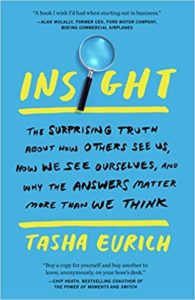 Dr. Tasha Eurich’s book Insight is a look at self-awareness through the lens of an organizational psychologist.
Dr. Tasha Eurich’s book Insight is a look at self-awareness through the lens of an organizational psychologist.
With a pragmatic approach to professional development, this book serves leaders in becoming more self-aware and successful.
Grounded in the science of human behavior, this book offers readers the ability to uncover the invisible blocks to self-awareness.
Available on Amazon.
5. How Emotions Are Made: The Secret Life of The Brain – Lisa Feldman Barrett Ph.D.
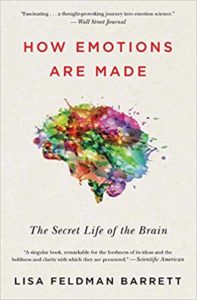 Lisa Feldman Barrett’s book, How Emotions Are Made: The Secret Life of The Brain, takes readers through brain anatomy and helps readers to know that they may have some control over their own experience of emotions.
Lisa Feldman Barrett’s book, How Emotions Are Made: The Secret Life of The Brain, takes readers through brain anatomy and helps readers to know that they may have some control over their own experience of emotions.
Available on Amazon.
Ten additional books are discussed in our article regarding the best self-awareness books.
5 Interesting Videos and TED Talks
The following visuals are great ways to improve one’s knowledge of self-awareness.
1. How Youth Thrive
Peter Benson’s TED talk, How Youth Thrive, is compelling. This talk discusses the spark that youth have and their awareness of its existence in themselves. Knowing that they are ‘seen’ gives youth self-awareness and joy.
2. Increase your self-awareness with one simple fix
Tasha Eurich’s TED talk highlights her research in self-awareness. Her evidence-based perspective as an organizational psychologist gives an informative speech about how most people are not, in fact, self-aware.
3. My Stroke of Insight
Jill Bolte Taylor’s TED talk discusses her very personal experience of having a stroke. It’s an astonishing story about the brain and self-awareness.
4. The Power of Self-Awareness
Dr. William Sparks talks about the power of self-awareness and his deeper understanding of “the shadow.”
5. How Self-Awareness Can Help You to Live the Life You Want
Marina Barayeva’s TED talk on self-awareness is helpful for youth.
Top Podcasts
Being Well by Rick Hanson, PhD uses psychology to look at achievement, awareness, and success. This episode, in particular, offers insight from Daniel Goleman.
The Self-Awareness Podcast, from Aaron Dodge, is a personal journey through self-awareness.
The Pathway to Happiness podcast, and this Awareness and Consciousness episode in particular, offers interesting insights into the voices in our heads.
If you enjoy listening to podcasts, we also have a selection of the eight best positive psychology podcasts.
Inspirational Quotes on Self-Awareness
Everything that irritates us about others can lead us to an understanding about ourselves.
Carl Gustav Jung
You can’t get away from yourself by moving from one place to another.
Ernest Hemingway
The greatest thing in the world is to know how to belong to oneself.
Michel de Montaigne
Every human has four endowments – self-awareness, conscience, independent will, and creative imagination. These give us the ultimate human freedom… The power to choose, to respond, to change.
Stephen R. Covey
A Take-Home Message
Science tells us that most human beings are not very adept at self-awareness. What researchers have found is that self-awareness is like a golden ticket for success and fulfillment. It takes work. Self-awareness and self-acceptance lead to improvements in emotional intelligence.
More people awakened and aware would be a massive transition in humanity. It would create better families, schools, and workplaces. With the shift would come increased compassion and empathy. Dare we dream that we can do better?
Thanks for reading!
We hope you enjoyed reading this article. Don’t forget to download our three Emotional Intelligence Exercises for free.
- Duval, T. S., & Silvia, P. J. (2002). Self-awareness, probability of improvement, and the self-serving bias. Journal of Personality and Social Psychology, 82(1), 49-61.
- Govern, J. M., & Marsch, L. A. (2001). Development and validation of the situational self-awareness scale. Consciousness and Cognition, 10(3), 366-378.
- Hippe, J. (2004). Self-awareness: A precursor to resiliency. Reclaiming Children & Youth, 12(4), 240-242.
- Kross, E., Ayduk, O., & Mischel, W. (2005). When asking “why” does not hurt: Distinguishing rumination from reflective processing of negative emotions. Psychological Science, 16(9), 709-715.
- Metcalfe, J., & Mischel, W. (1999). A hot/cool-system analysis of delay of gratification: Dynamics of willpower. Psychological Review, 106(1), 3-19.
- Miller, S., Nunnally, E. W., & Wackman, D. B. (1975). Alive and aware: Improving communications in relationships. Minneapolis, MN: Interpersonal Communication Programs.
- Nicholls, S., Wegener, M., Bay, D., & Cook, G. L. (2012). Emotional intelligence tests: Potential impacts on the hiring process for accounting students. Accounting Education, 21(1), 75-95.
- Nisbett, R. E., & Wilson, T. D. (1977). Telling more than we know: Verbal reports on mental processes. Psychological Review, 81(3), 231–257.
- Ostroff, C., Atwater, L. E., & Feinberg, B. J. (2004). Understanding self-other agreement: A look at rater and ratee characteristics, context and outcomes. Personnel Psychology, 57(2), 333-375.
- Scheier, M. F., & Carver, C. S. (1985). The self-consciousness scale: A revised version for use with general populations. Journal of Applied Social Psychology, 15(8), 687-699.
- Waters, L. (2017). The strength switch: How the new science of strength-based parenting can help your child and your teen to flourish. New York, NY: Penguin.
- Younas, A., Rasheed, S. P., Sundus, A., & Inayat, S. (2020). Nurses’ perspectives of self-awareness in nursing practice: A descriptive qualitative study. Nursing & Health Sciences, 22(2), 398-405.
Let us know your thoughts
Read other articles by their category
- Body & Brain (49)
- Coaching & Application (57)
- Compassion (26)
- Counseling (51)
- Emotional Intelligence (24)
- Gratitude (18)
- Grief & Bereavement (21)
- Happiness & SWB (40)
- Meaning & Values (26)
- Meditation (20)
- Mindfulness (45)
- Motivation & Goals (45)
- Optimism & Mindset (34)
- Positive CBT (28)
- Positive Communication (20)
- Positive Education (47)
- Positive Emotions (32)
- Positive Leadership (18)
- Positive Parenting (4)
- Positive Psychology (33)
- Positive Workplace (37)
- Productivity (16)
- Relationships (46)
- Resilience & Coping (36)
- Self Awareness (21)
- Self Esteem (37)
- Strengths & Virtues (31)
- Stress & Burnout Prevention (34)
- Theory & Books (46)
- Therapy Exercises (37)
- Types of Therapy (64)

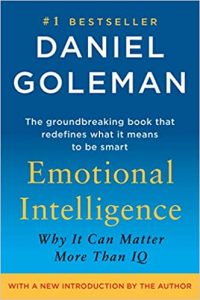
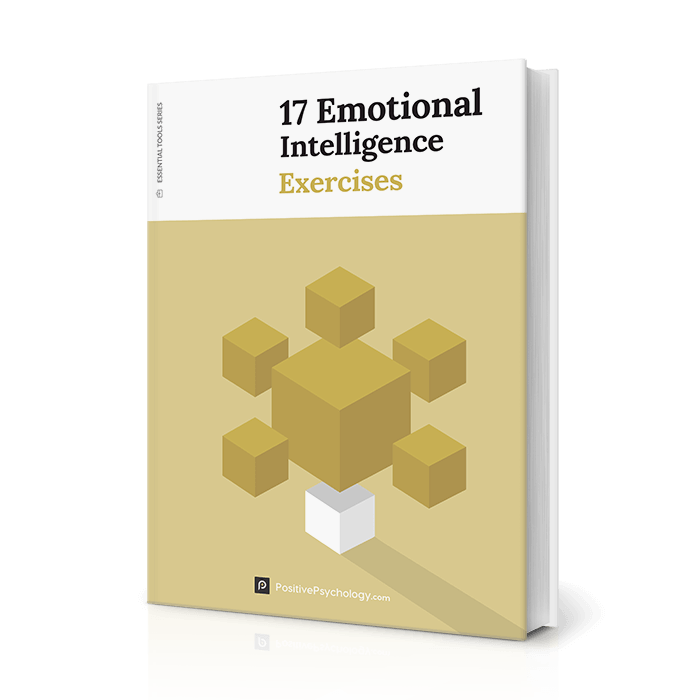


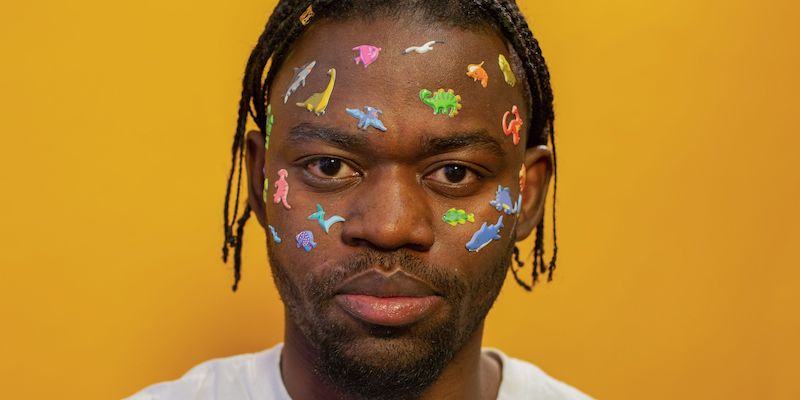
What our readers think
the scoring results for Self-Consciousness-Scale. is not clear after i sum the result for each category how shall i know if i’m doing good or not
so could you please advise how to know the scale for Private Self-Consciousness and the others after sum all the related point
Hi Lubna,
The Self Consciousness Scale measures two aspects: private self-consciousness (inner thoughts and emotions) and public self-consciousness (how one appears to others). People who score higher on private self-consciousness tend to be more introspective and attuned to their inner experiences (which can also lead to rumination). Scoring higher in public self-consciousness relates to being more attuned to how they present themselves to others and may feel more concerned about social evaluations and judgments.
I hope this answers your question!
Kind regards,
Julia | Community Manager
Thanks for this. Interesting read and helpful.
I was initially listening to these talks whilst moving around my house .I found I needed to stop and REALLY listen as part of what I was doing was avoiding some things that were uncomfortable and challenging .Thankyou for the first part of a journey I NEED to travel
This was an amazing read, thank you so much for compiling all of this!